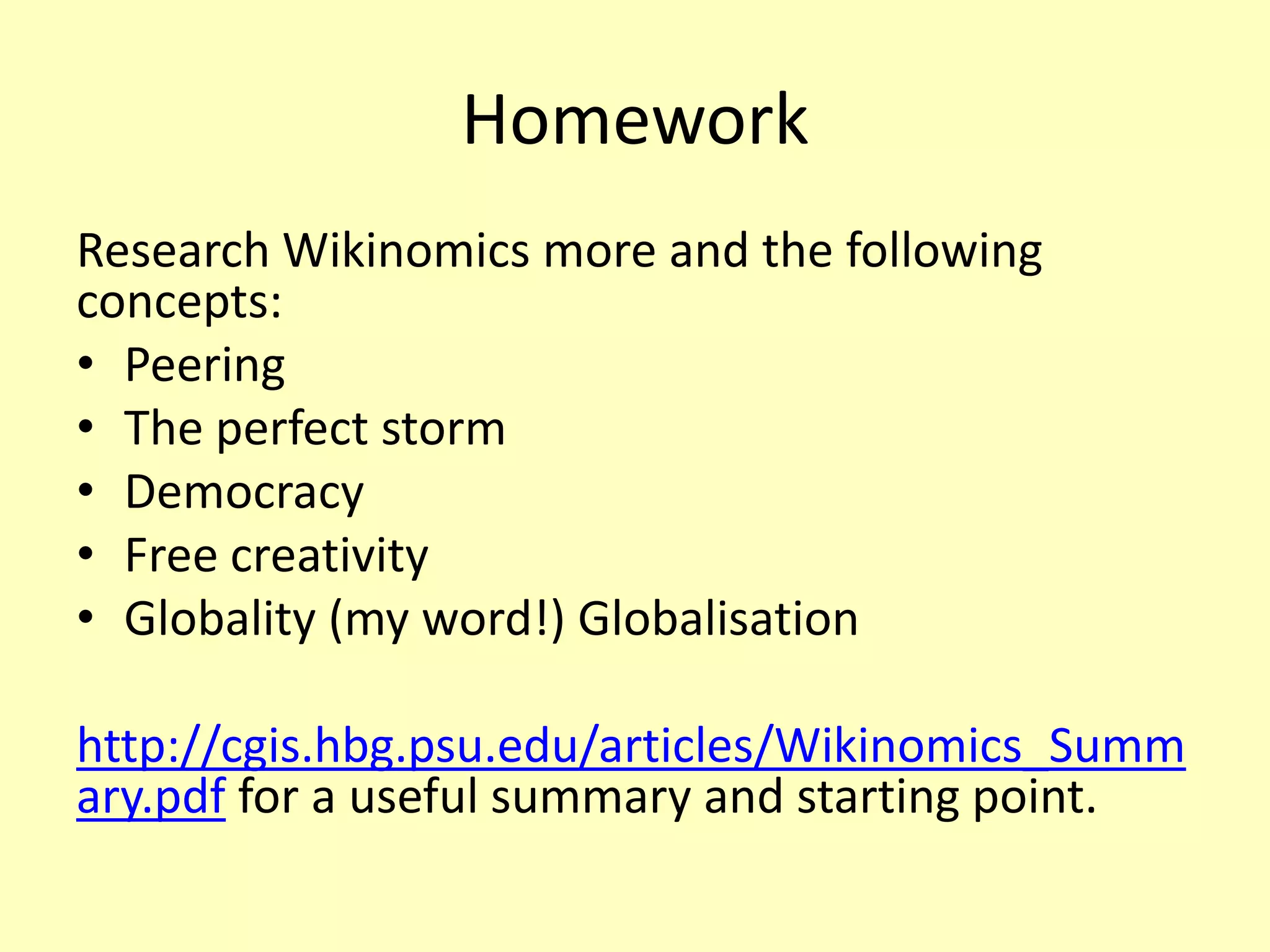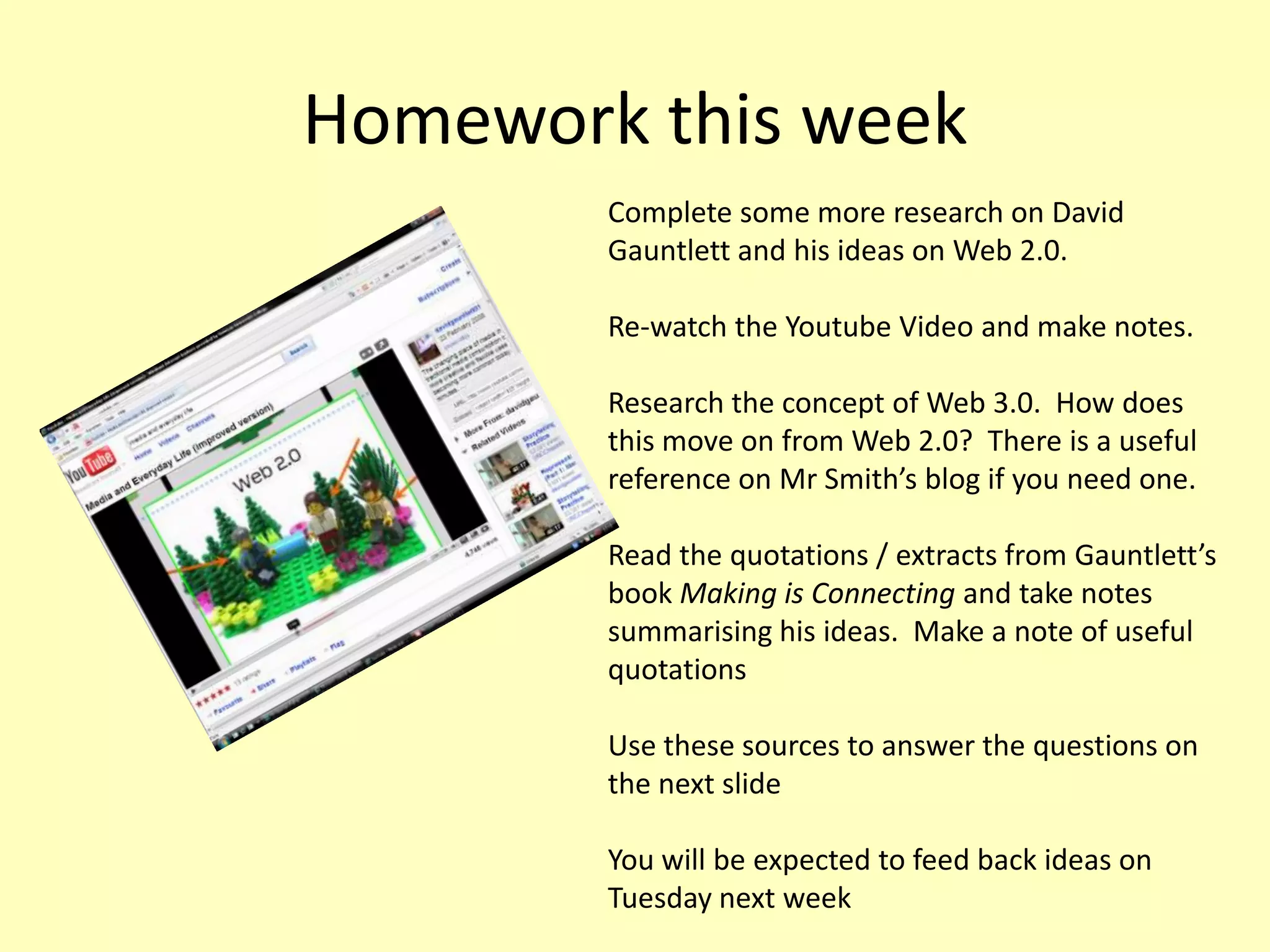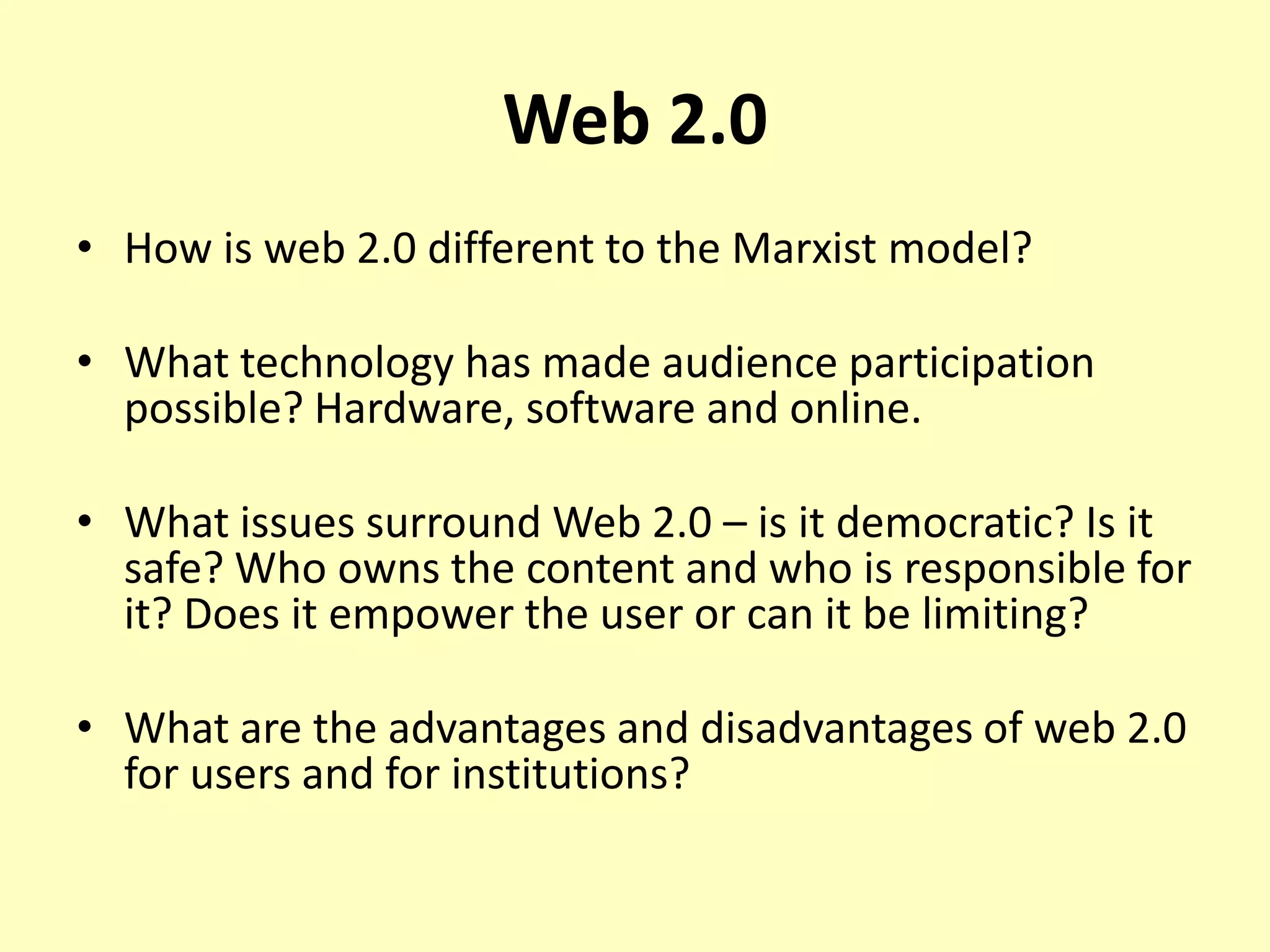This document provides an overview of key concepts from the book "Wikinomics" by Don Tapscott and Anthony Williams. It outlines three main learning objectives: 1) to consider issues relating to Web 2.0, 2) to understand the concept of "wikinomics", and 3) to examine benefits and difficulties of wikinomics. Key terminology from the book is defined, such as "peering", "prosumers", and concepts related to the democratization of media through user participation and peer production. Examples are given of early peer-produced projects like Linux, Wikipedia, and MySpace that showed the potential of mass collaboration online.
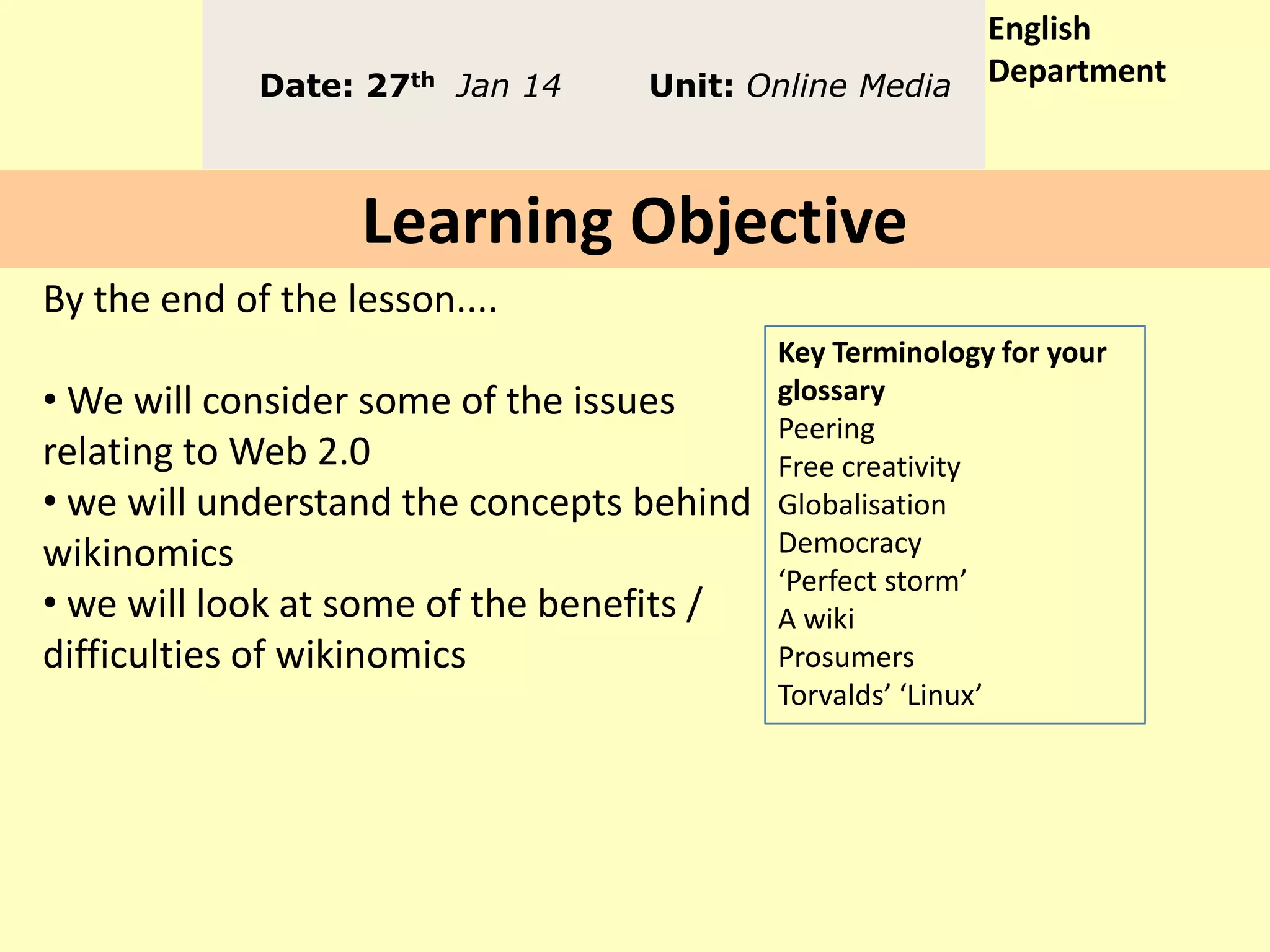
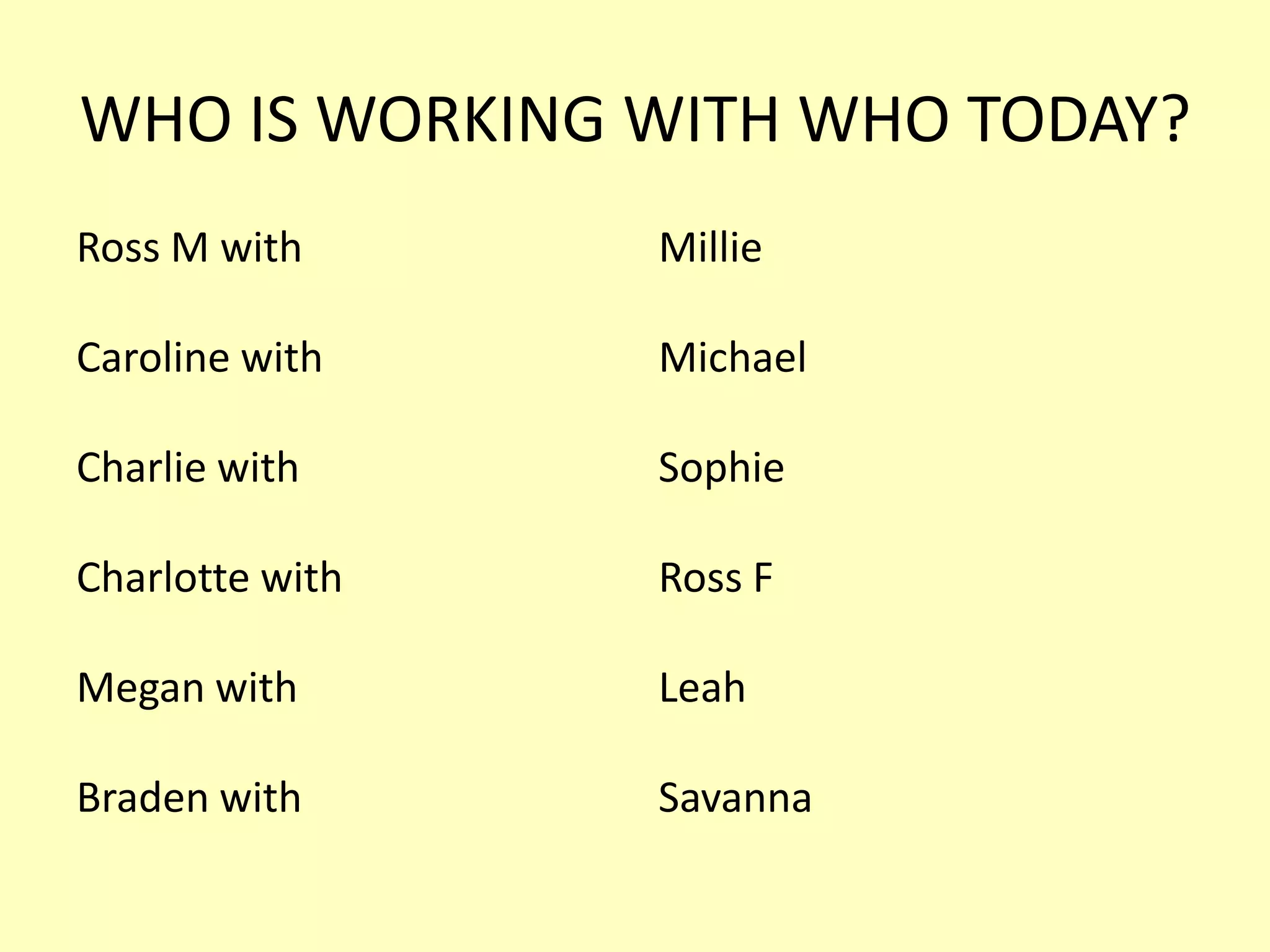

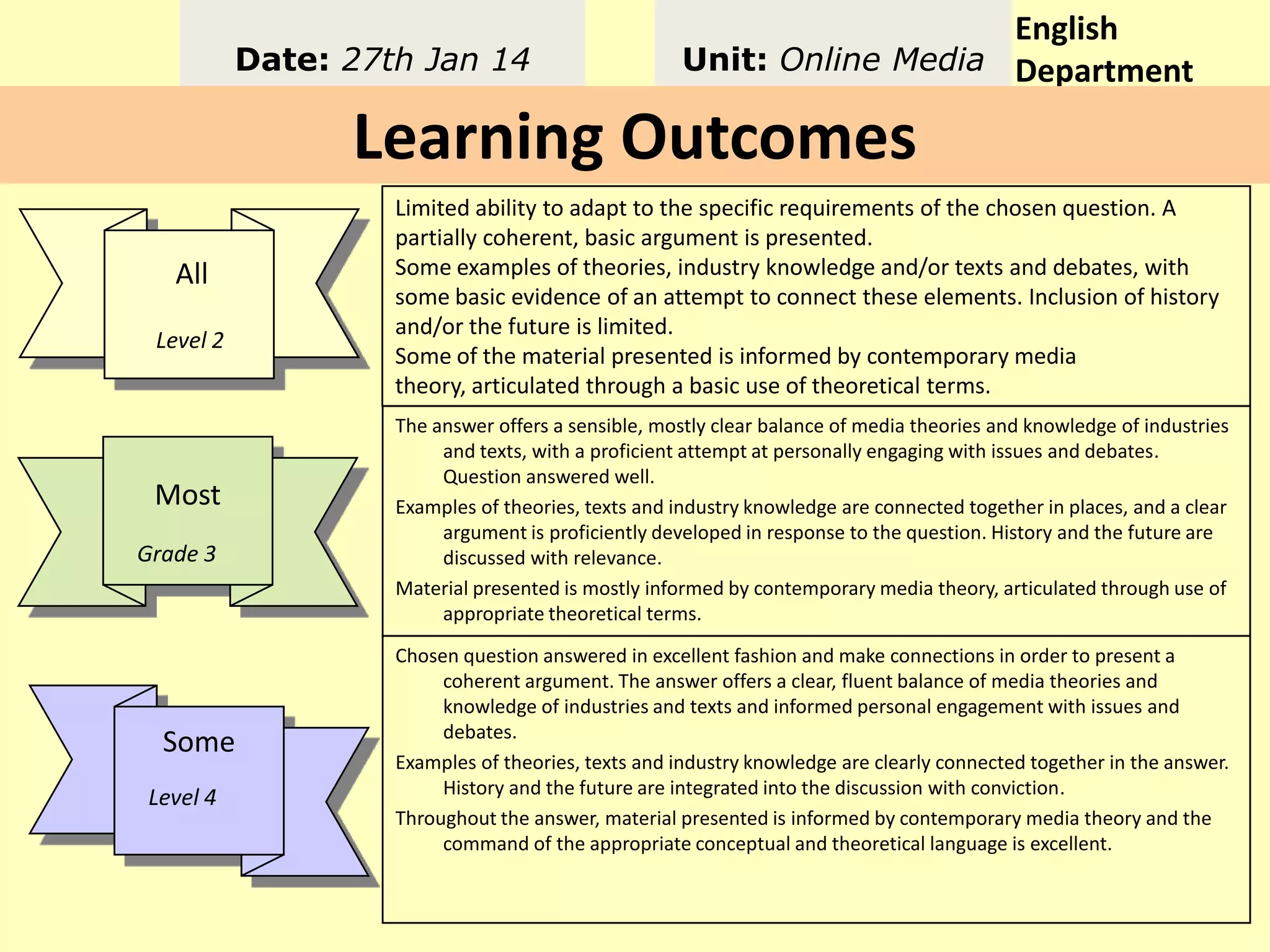
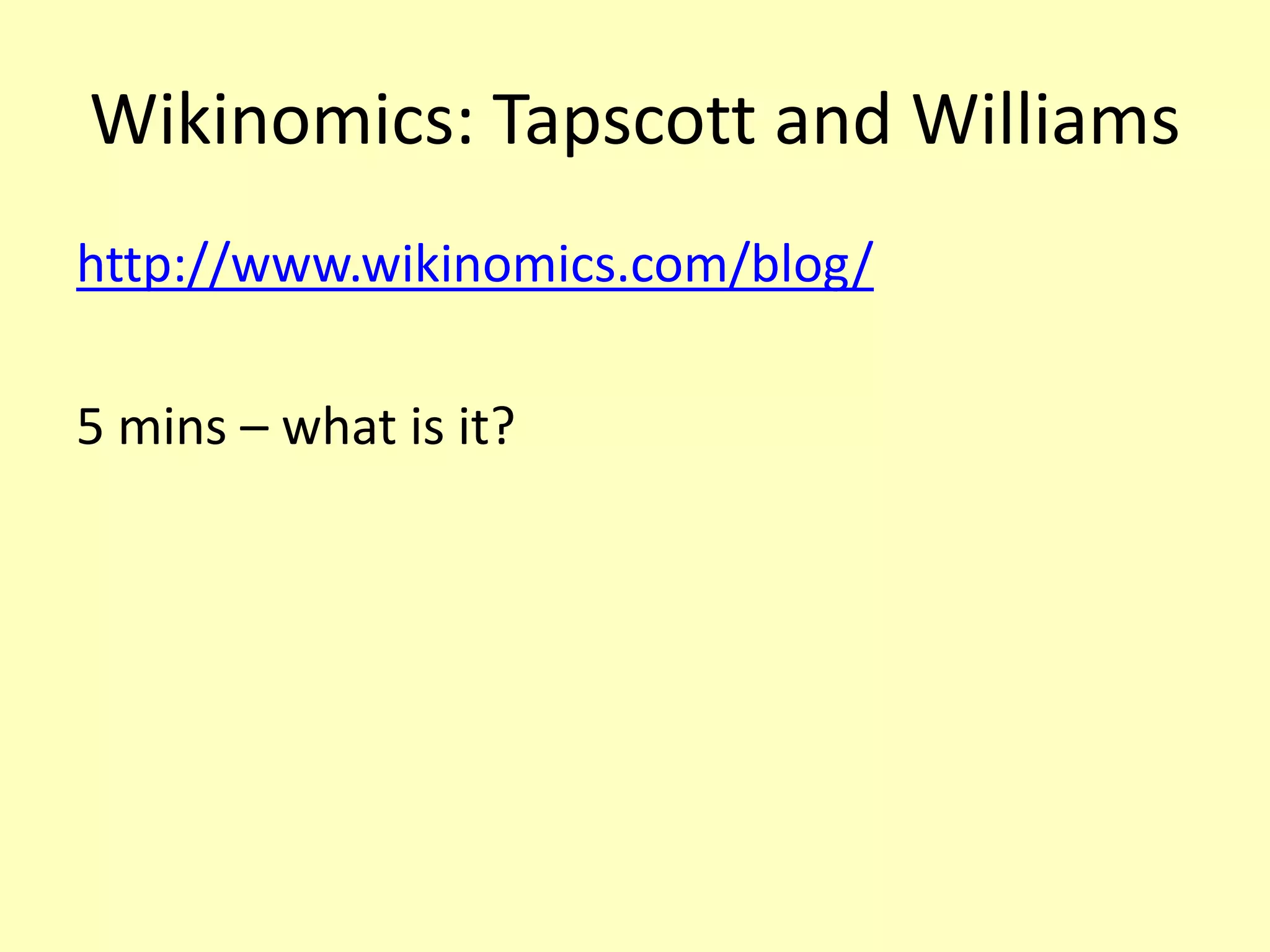
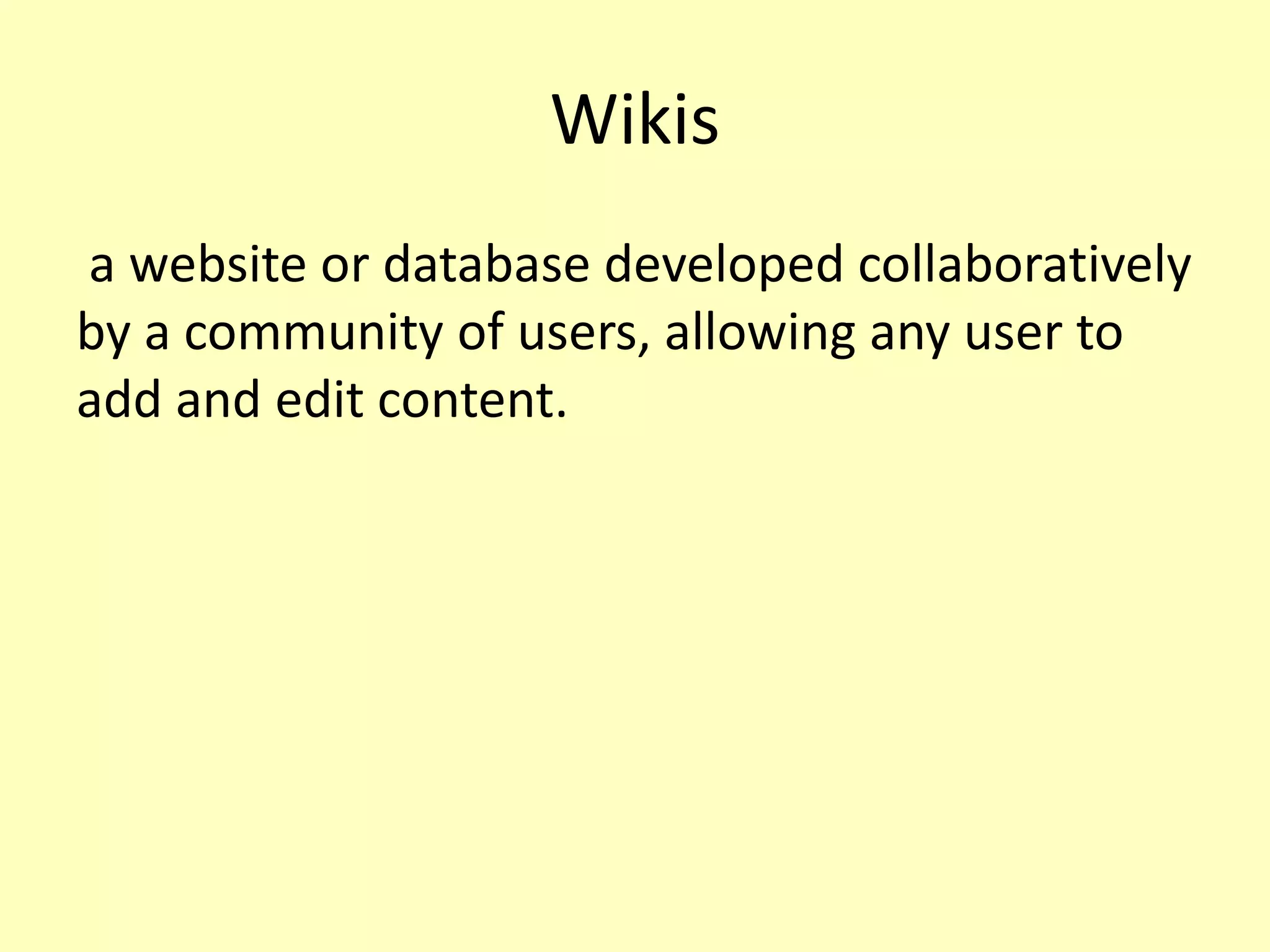
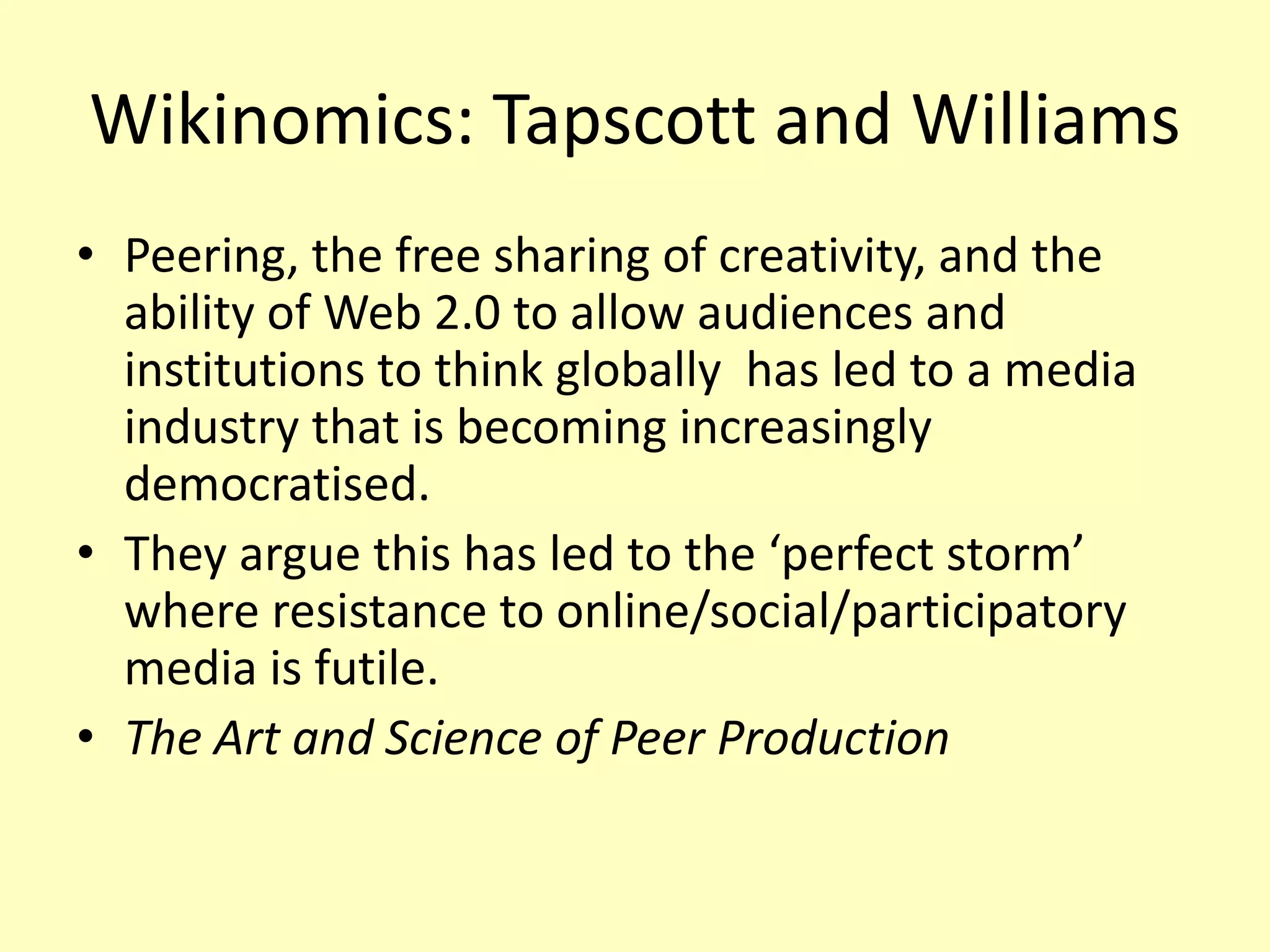
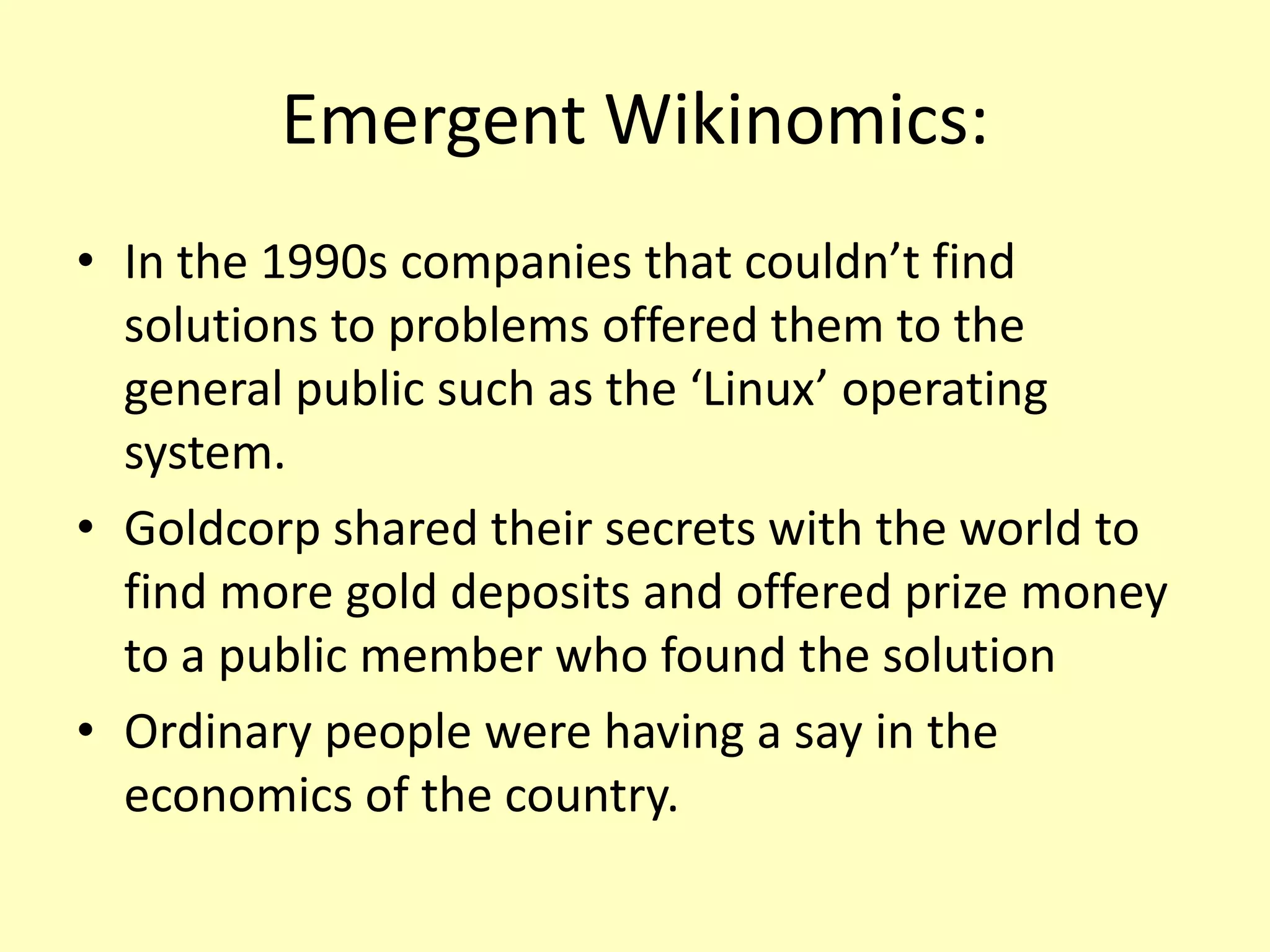
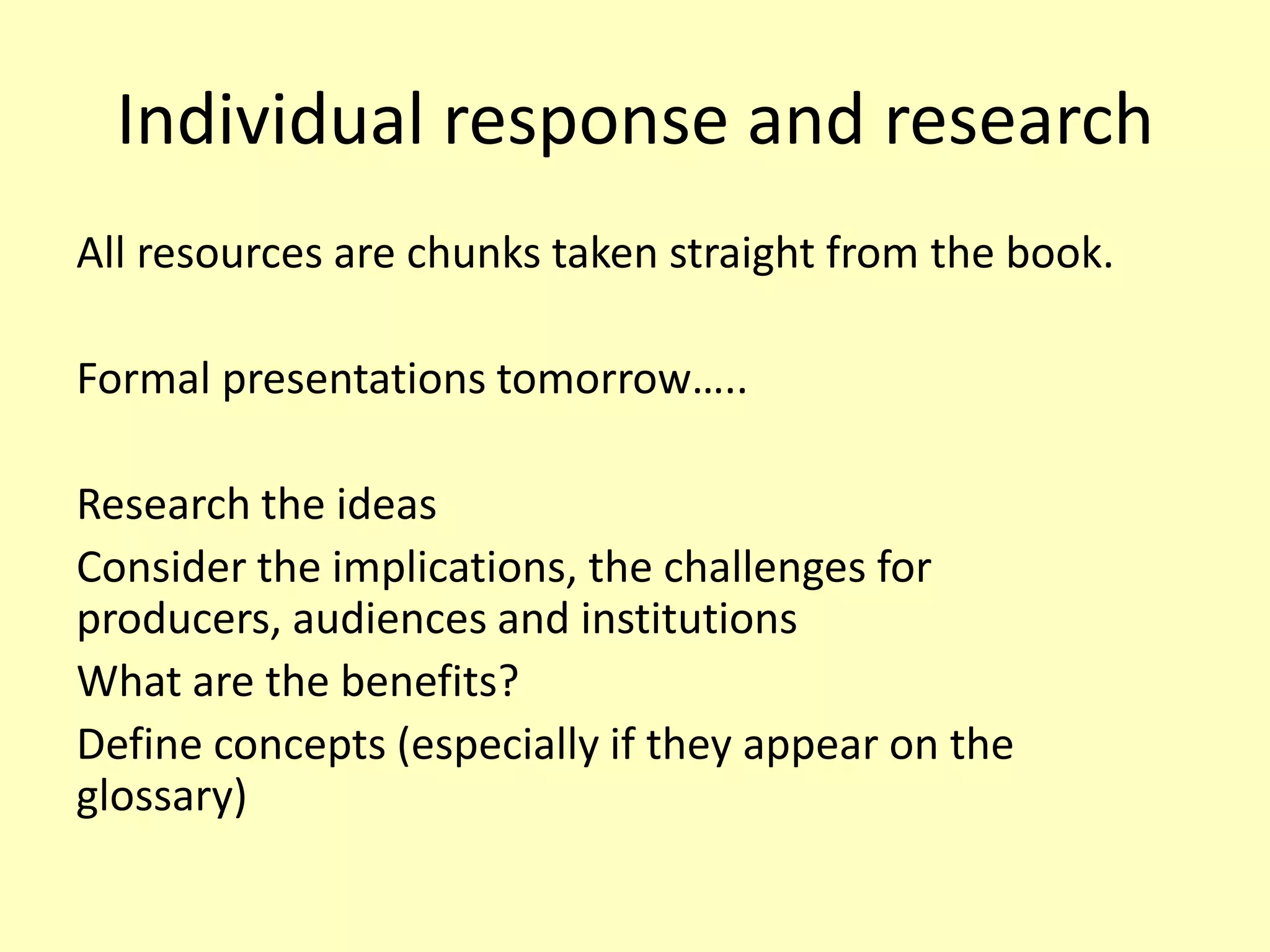
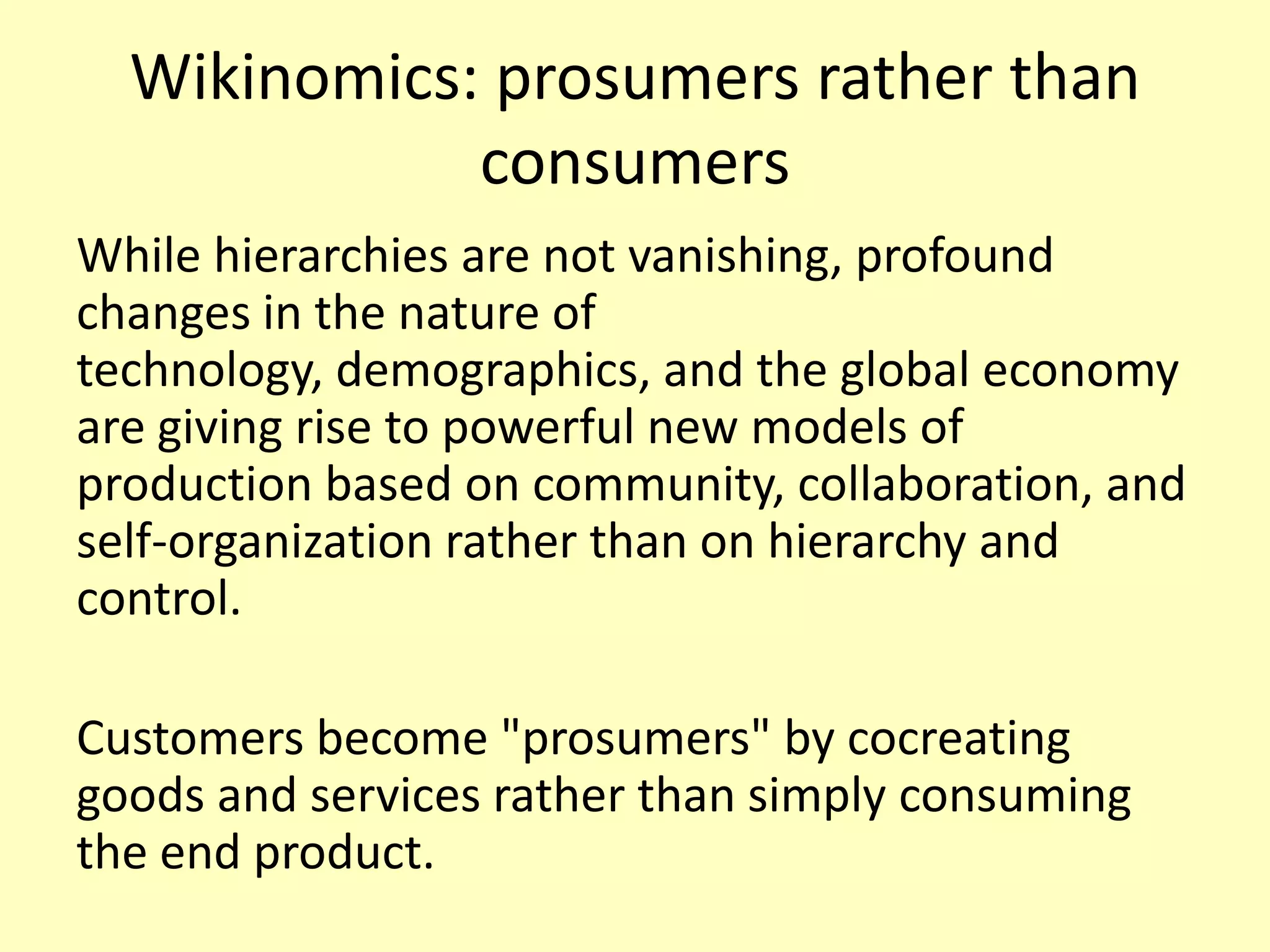
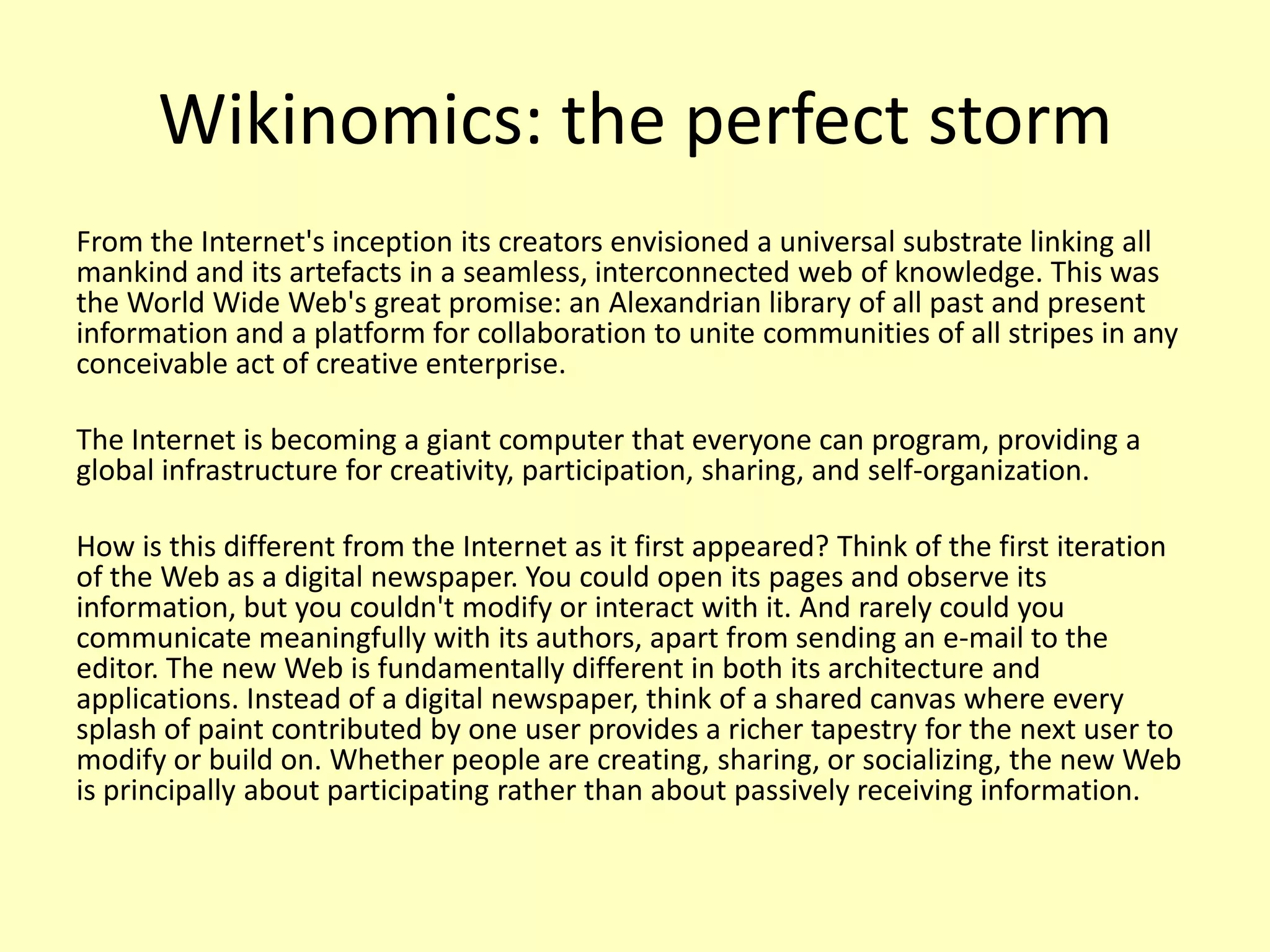
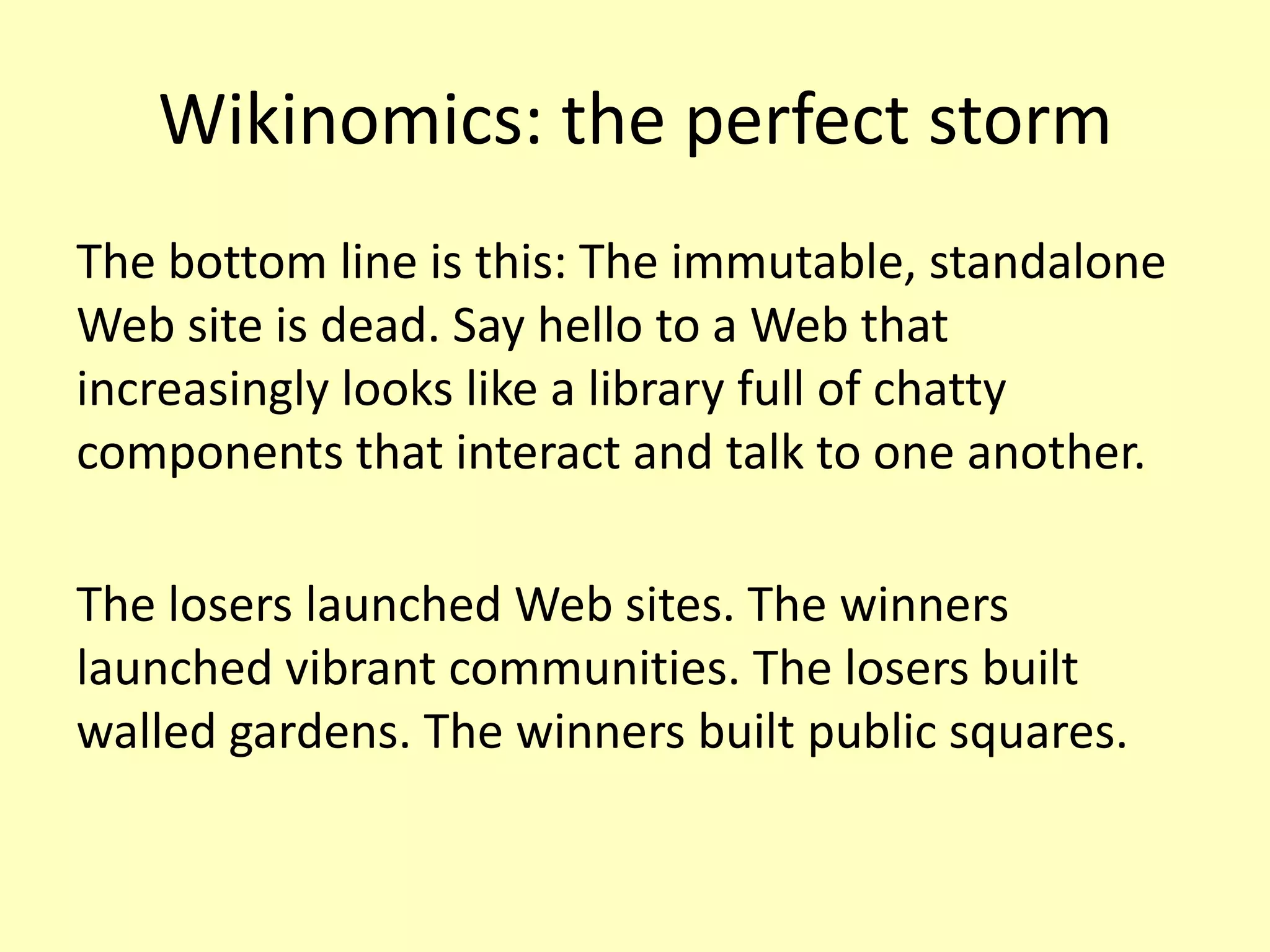
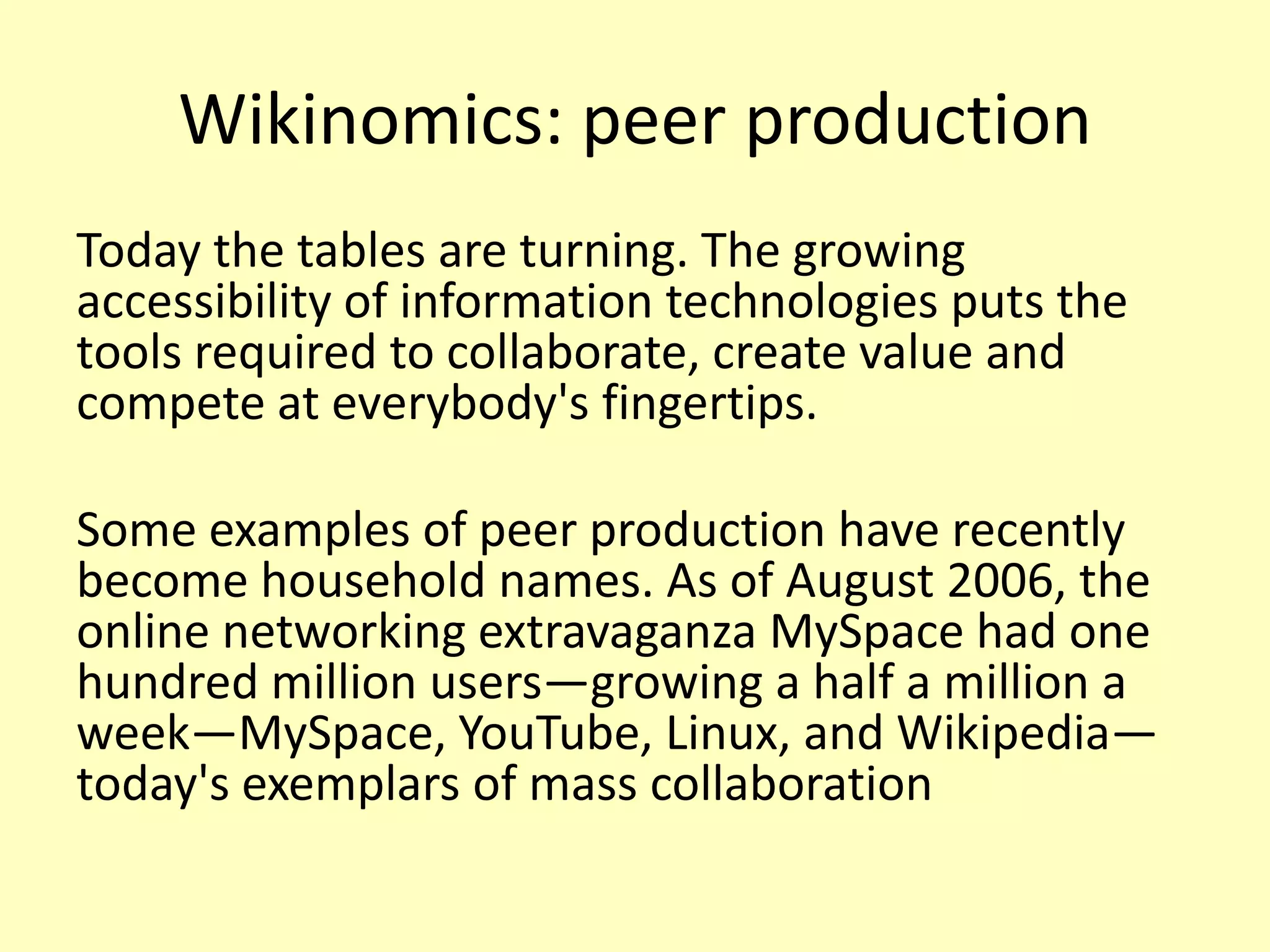
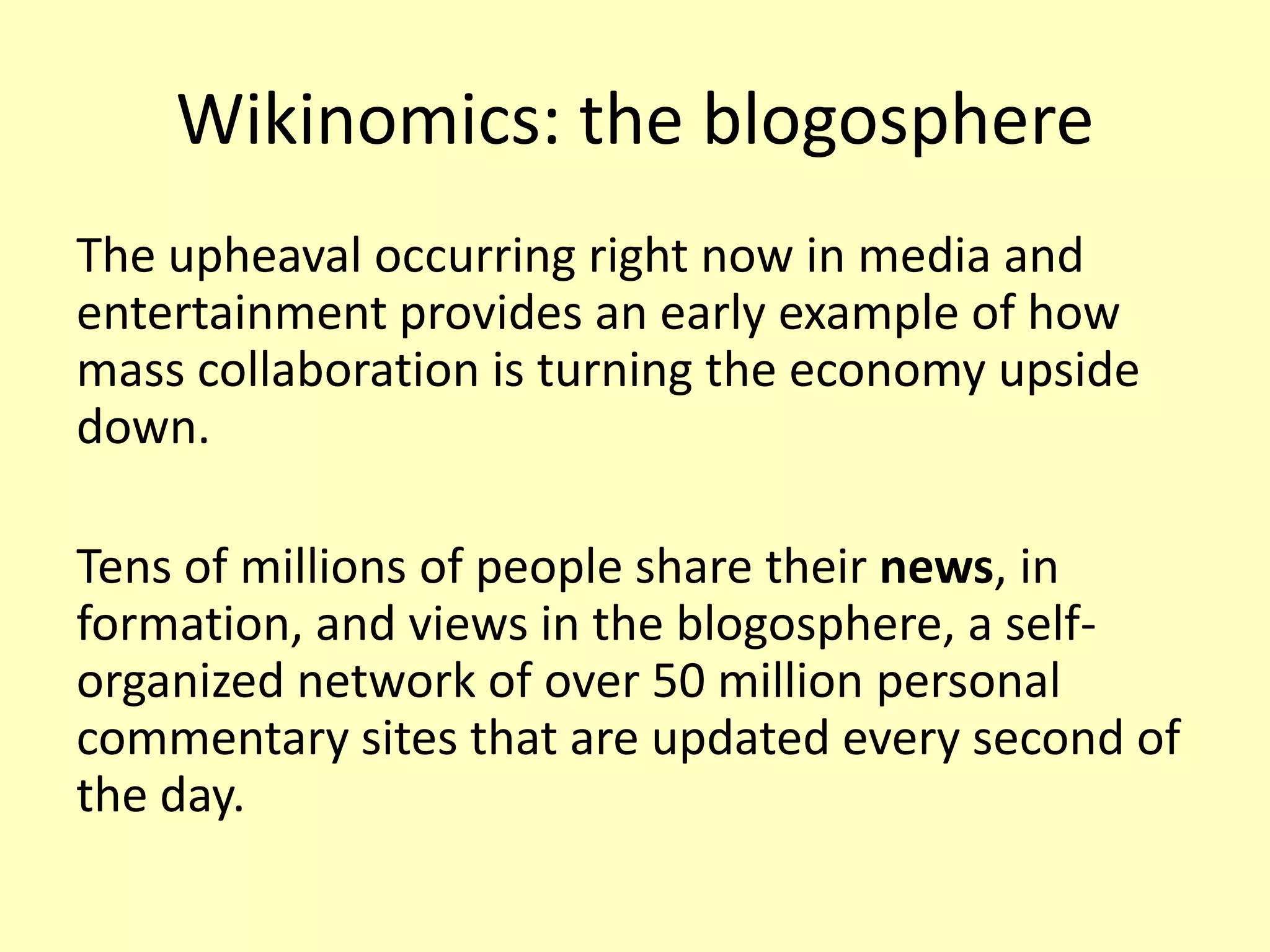
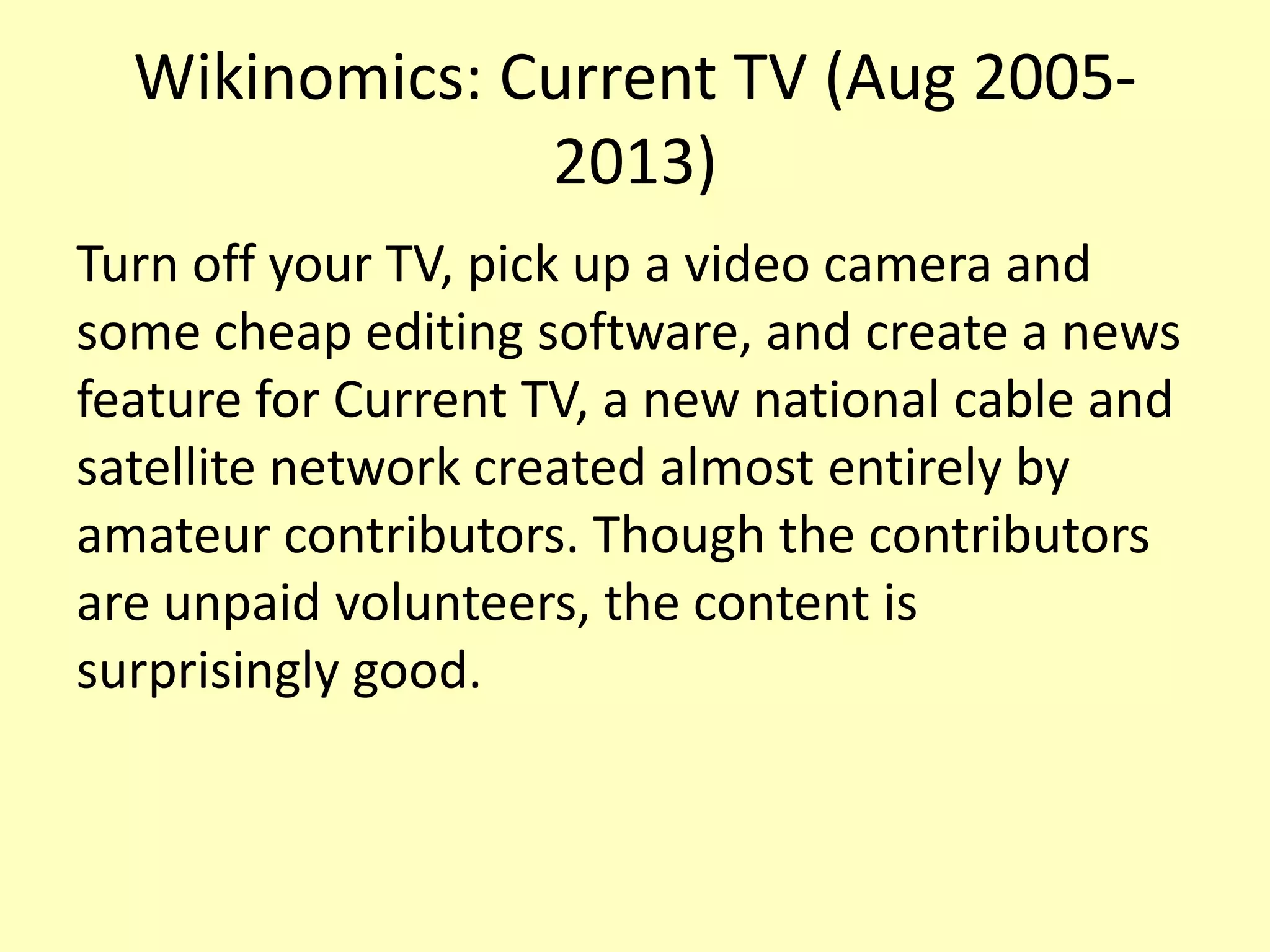
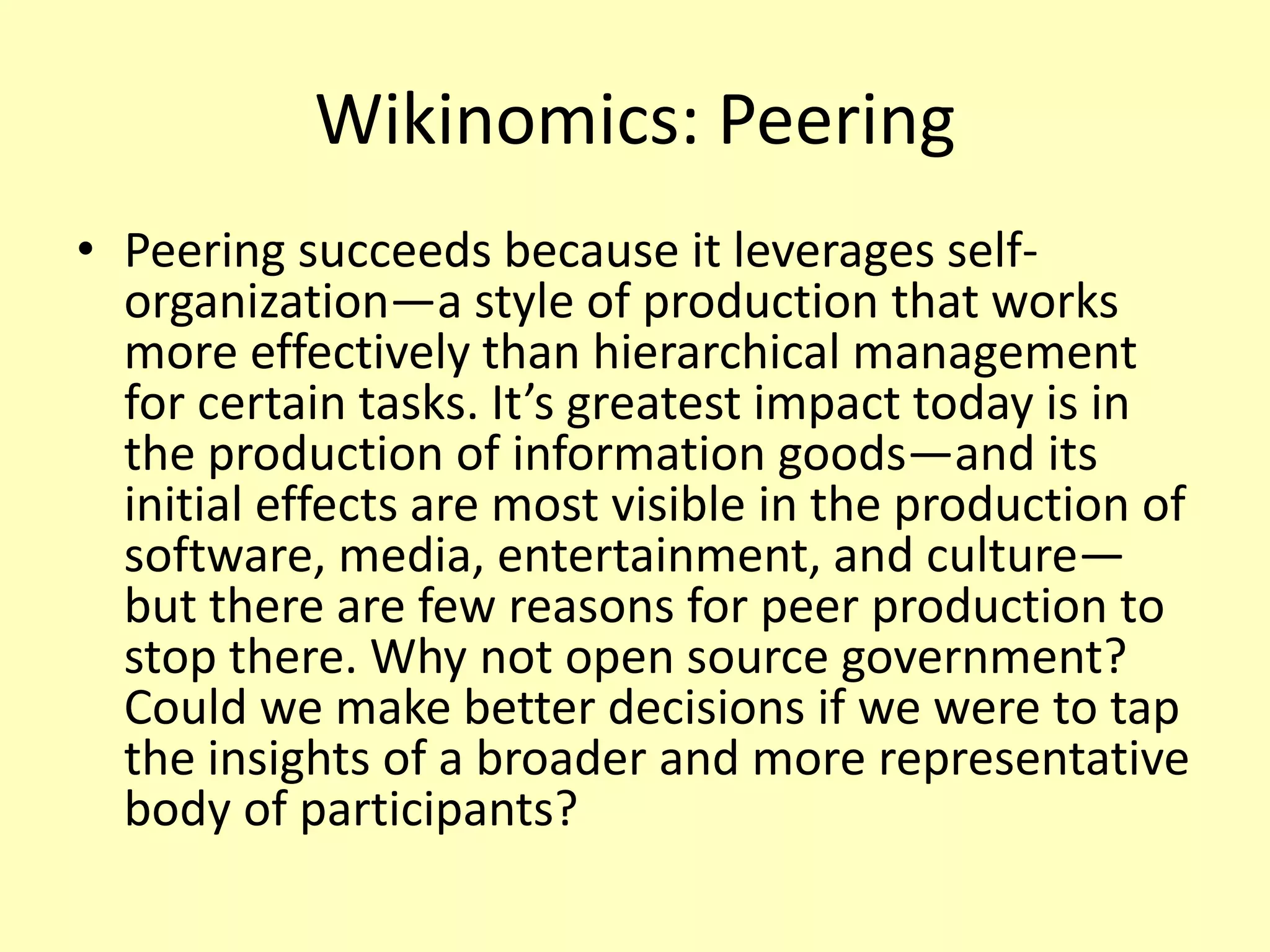
![Wikinomics: democracy
The democratization of the media publishing
tools, however, is rapidly transforming our notions of how
expertise, relevance, and professionalism develop in the
media. "The old way of thinking," says Rebick, "is that the
cream rises to the top. . . . [Y]ou have hierarchical
structures that cut people out at each level." On sites like
Rabble, the users, not managers, make those decisions.
"Instead of cutting people out, we bring them in, and
people can pick and choose what they want to read or
hear. They don't have to listen to all the podcasts or read
all of the blog posts. But there's something there for
everybody, and it allows for people to come in and do
their thing and get noticed."](https://image.slidesharecdn.com/06wikinomics1abn-140126135004-phpapp01/75/Wikinomics-Mrs-Brown-17-2048.jpg)
